#baroque fashion
Note
I've seen a post you've reblogged and added to, among many things about women showing nipples. Can you recommend any ref material (articles, videos, etc.) are share your knowledge about this? Cause I'm curious about that, as nowadays going out in a shirt without a bra makes you indecent, while in like 90s it was okayish? I wonder how it was in previous centuries.
There is a really cool academic paper about bare breast dresses in 17th century England specifically. I think anyone can read it by creating a free account.
Abby Cox also has a good video about the cleavage during the past 500 years in which she goes through also the nip slip phenomena.
I don't have other sources that specifically focus on this subject, though many sources about specific decades touch on it, but I do have my primary source image collection, so I can sum up the history of the bare nipple.
So my findings from primary source images (I could be wrong and maybe I just haven't found earlier examples) is that the Venetians were the first ones to show the nipple for courtly fashion. At the same time in other places in Europe they sported the early Elizabethan no-boob style that completely covered and flattened the chest. In the other corners of Italy the necklines were also low but less extreme. Venetian kirtle necklines dropped extremely low as early as 1560s and they combined extremely sheer, basically see-through partlets with their kirtle. First example below is a 1565-70 portrait of a Venetian lady with the nipples just barely covered waiting slip into view with a movement of arm. There was an even more extreme version of this with the kirtle being literally underboob style, still with a sheer doublet. Though I believe this was not quite for the respectable ladies, since I have only seen it depicted on high class courtesans. They were not exactly respectable ladies, but they did have quite good social position. The second example is a 1570s depiction of a courtesan, which is revealed by the horned hairstyle. By the end of the century this underbust style with only see through fabric covering breasts, had become respectable. In the last example it's shown on the wife of the Venetian doge in 1597.
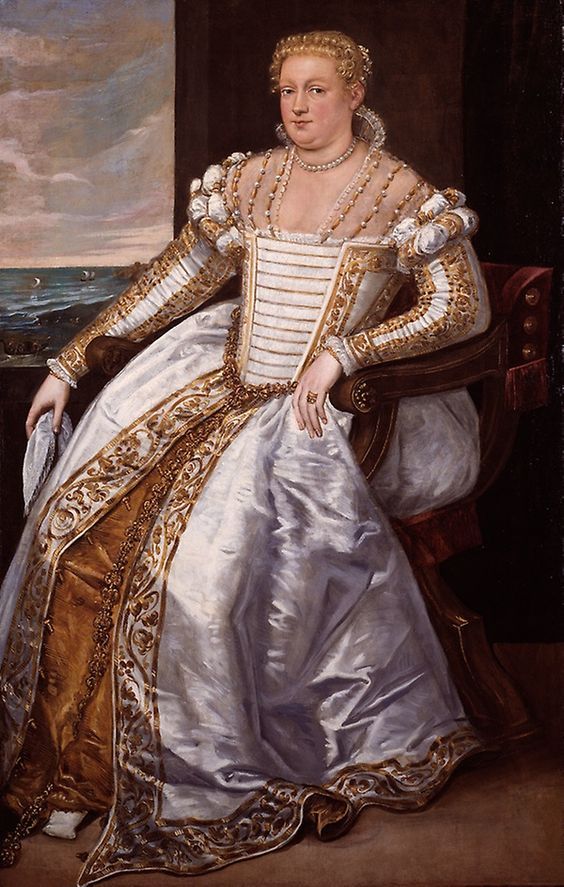
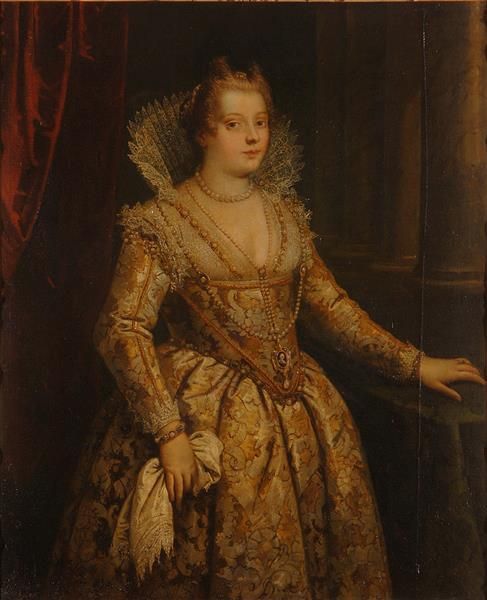

Around the same time, at the very end of 1500s, the extremely low cut bodice fashion enters rest of Europe. The low cut style was present in the bodices of all classes, but the nipple was really only an aristocrat thing. The lower classes would cover their breasts with a partlet, that was not sheer. Bare breast was ironically from our perspective a show of innocence, youthful beauty and virtue, and to pull off the style with respect, you also had to embody those ideals. Lower class women were considered inherently vulgar and lacking virtue, so a nipple in their case was seen as indecent. Bare boobs were also a sort of status symbol, since the upper class would hire wet nurses to breastfeed their children so they could show of their youthful boobs.
Covering partlets and bodices were still also used in the first decade of 1600s by nobles and the nip slip was mostly reserved for the courtly events. The first image below is an early example of English extremely low neckline that certainly couldn't contain boobs even with a bit of movement from 1597. The 1610s started around 5 decades of fashion that showed the whole boob. The first three were the most extreme. Here's some highlights: The second image is from 1619.
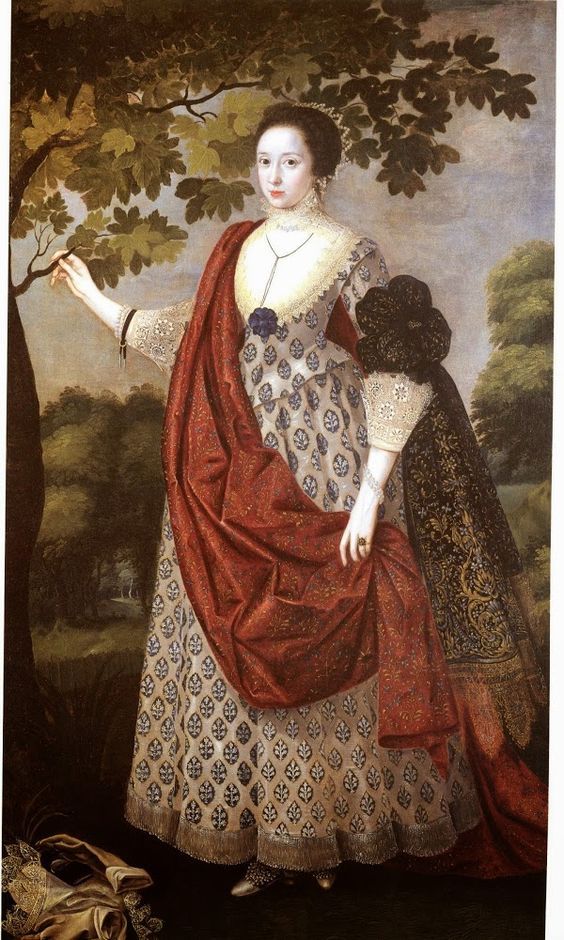

Here the first, very much showing nipples, from c. 1630. The second from 1632.
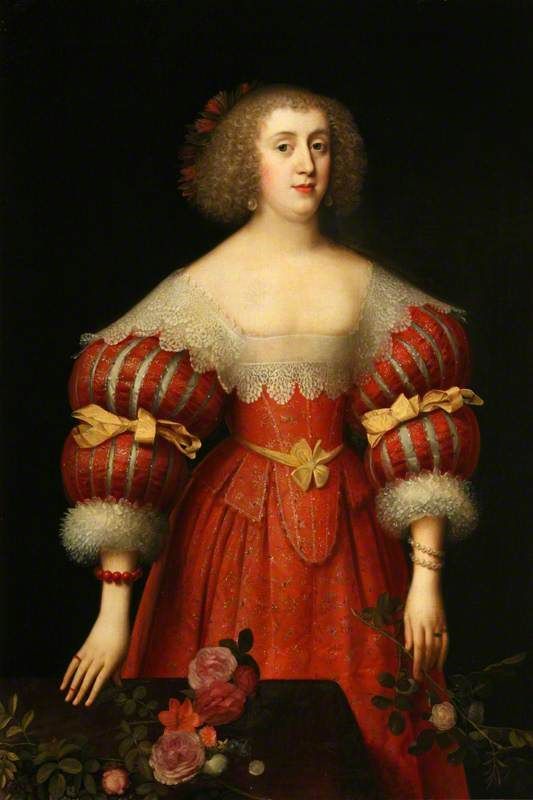
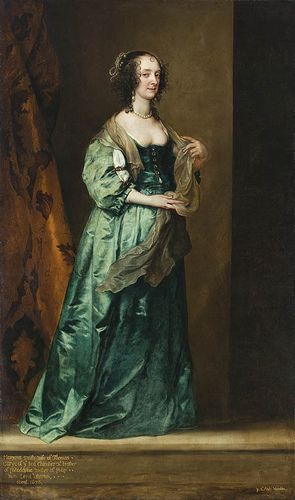
The neckline would slowly and slightly rise during the next decades, but nip slips were still expected. Here's an example from 1649 and then from 1650-55. In 1660s the neckline would get still slightly higher and by 1870s it was in a not very slippable hight. The necklines would stay low for the next century, though mostly not in boob showing territory, but we'll get there. But I will say that covering the neckline in casual context was expected. Boobs were mostly for fancy occasions. It was considered vain to show off your boobs when the occasion didn't call for it and covering up during the day was necessary for a respectable lady. You wouldn't want to have tan in your milk-white skin like a poor, and also they didn't have sun screen so burning was a reasonable concern.

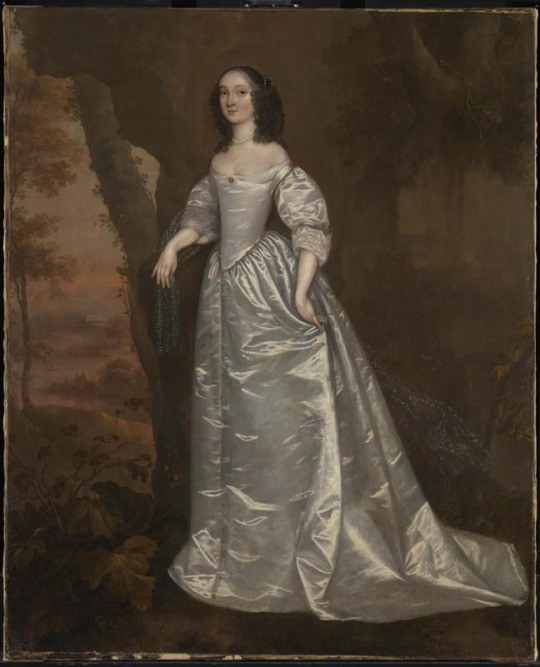
1720s to 1740s saw necklines that went to the nip slip territory, though they didn't go quite as low as 100 years earlier. The nipple was present in the French courtly fashion especially and rouging your nipples to enhance them was popular. Émilie Du Châtelet (1706-1749), who was an accomplished physicist and made contributions to Newtonian mechanics, was known in the French court to show off her boobies. An icon. Here she is in 1748. Here's another example from this era from 1728.
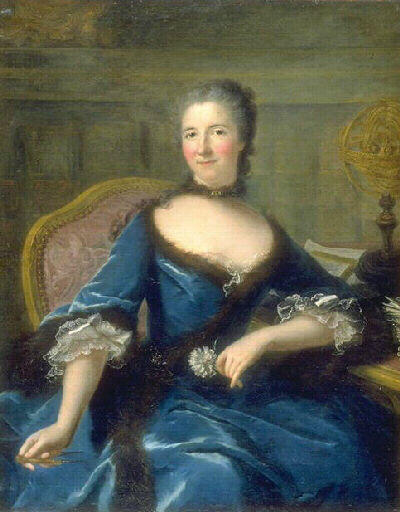
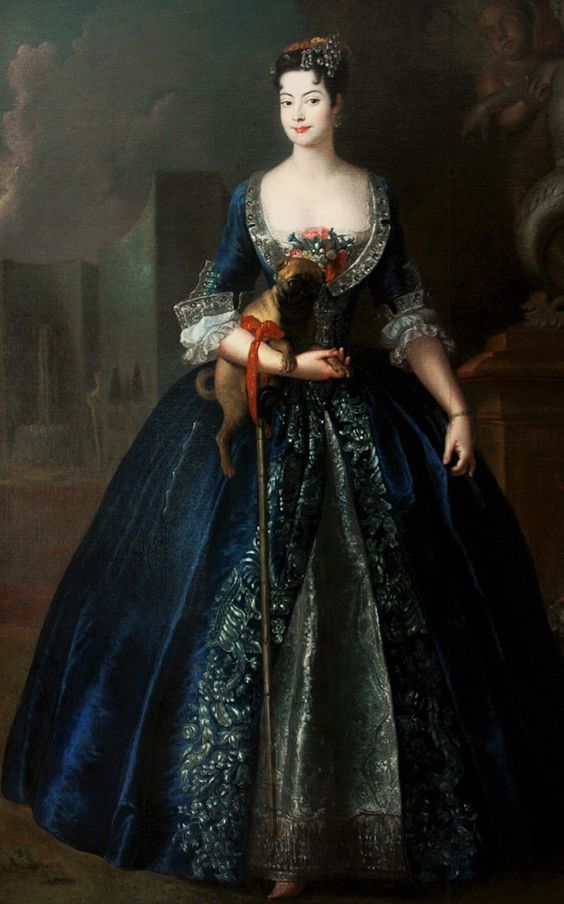
The Rococo neckline never got high, but in the middle of the century it was less low till 1770s when it plunged into new lows. In 1770s the fashion reached a saturation point, when everything was the most. This included boobs. The most boob visible. There was a change in the attitudes though. The visible boob was not a scandal, but it was risque, instead of sing of innocent and did cause offense in certain circles. I think it's because of the French revolution values gaining momentum. I talked about this in length in another post, mostly in context of masculinity, but till that point femininity and masculinity had been mostly reserved for the aristocracy. Gender performance was mostly performance of wealth. The revolutionaries constructed new masculinity and femininity, which laid the groundwork for the modern gender, in opposition to the aristocracy and their decadence. The new femininity was decent, moral and motherly, an early version of the Victorian angel of the house. The boob was present in the revolutionary imagery, but in an abstract presentation. I can't say for sure, but I think bare breasts became indecent because it was specifically fashion of the indecent French aristocracy.
Here's example somewhere from the decade and another from 1778. The neckline stayed quite low for the 1780s, but rose to cover the boobs for the 1790s.

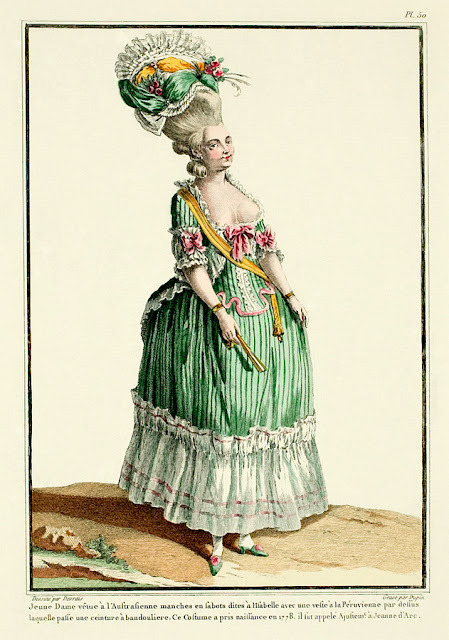
The nipple didn't stay hidden for long but made a quick comeback in the Regency evening fashion. It was somewhat scandalous by this point, and the nipple and sheer fabrics of the Regency fashion gained much scorn and satire. The styles that were in the high danger nip slip territory and those that allowed the nipple to show through fabric, were still quite popular. The sleeves had been mid length for two centuries, but in 1790s they had made a split between evening and day wear. The evening sleeves were tiny, just covering the shoulder. Showing that would have been a little too much. Like a bare boob? A risque choice but fine. A shoulder? Straight to the horny jail. (I'm joking they did have sheer sleeves and sometimes portraits with exposed shoulder.) But long sleeves became the standard part of the day wear. Getting sun was still not acceptable for the same reasonable and unreasonable reasons. Day dresses did also usually have higher necklines or were at least worn with a chemisette to cover the neckline. Fine Indian muslin was a huge trend. It was extremely sheer and used in multiple layers to build up some cover. There were claims that a gust of wind would render the ladies practically naked, though because they were wearing their underclothing including a shift, which certainly wasn't made from the very expensive muslin, I'm guessing this was an exaggeration. Especially though in the first decade, short underboob stays were fairly popular, so combined with a muslin, nipples were seen. Here's an early 1798 example of exactly that. The short stays did disappear eventually, but in 1810s the extremely small bodices did provide nip slip opportunities, as seen in this 1811 fashion plate.
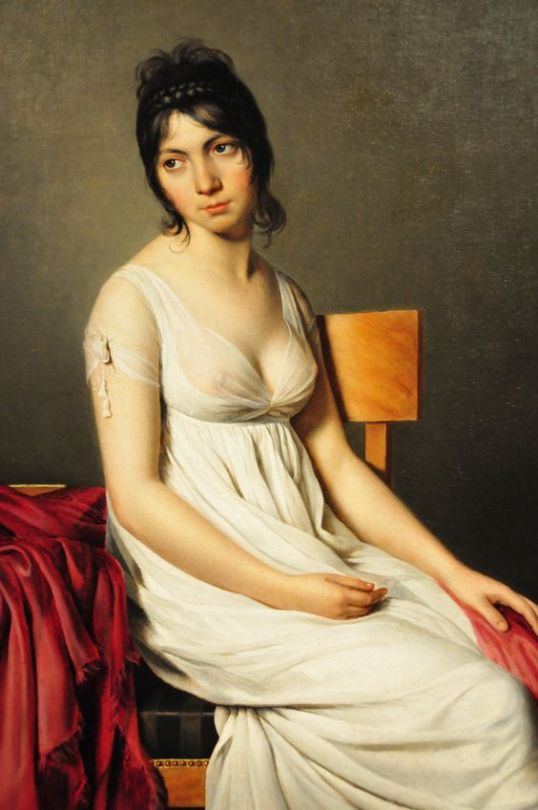
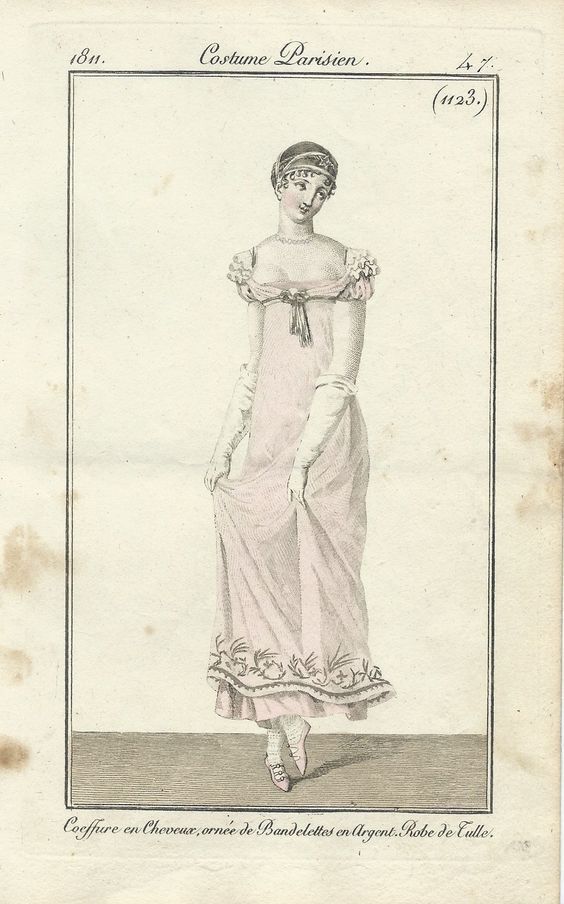
Victorian moralizing did fully kill the nip slip, though at least they were gender neutral about it. The male nipple was just as offensive to them. In 1890s, when bodybuilding became a big thing, bodybuilder men were arrested for public indecency for not wearing a shirt.
#there was also the new femininity aspect to regency nipple which had to do with breastfeeding becoming fashionable among upper class#it's about the whole motherly thing that came with the french revolution#i can't remember the book i read it from so i didn't go into it because i couldn't remember the details lol#but it did definitely have an effect to the fashion and to the perception of nipple#historical fashion#fashion history#history#dress history#fashion#answers#painting#fashion plate#renaissance fashion#elizabethan fashion#rococo fashion#baroque fashion#regency fashion#will tumblr prove itself to be again more prudish than elizabethans and label my post as mature content?#remains to be seen
504 notes
·
View notes
Text
17th century dress inspired by my beloved Versailles royal court fashion. It's mostly handsewn, made out of satin and trimmed with lace. It was the first serious historical costume i have ever made. And to be honest, my favourite one <3
Hair, makeup, model and photo by me <33

#louis xiv fashion#baroque fashion#historical reenactment#louis xiv#french#versailles#17th century#1600s#historical sewing#sewing#historical fashion#17th century fashion#baroque#history#historical costuming#costume
206 notes
·
View notes
Photo

~ Featuring Reds ~
60 notes
·
View notes
Text
Spanish baroque women's fashion save me.
Spanish baroque women's fashion...
Save me Spanish baroque women's fashion.
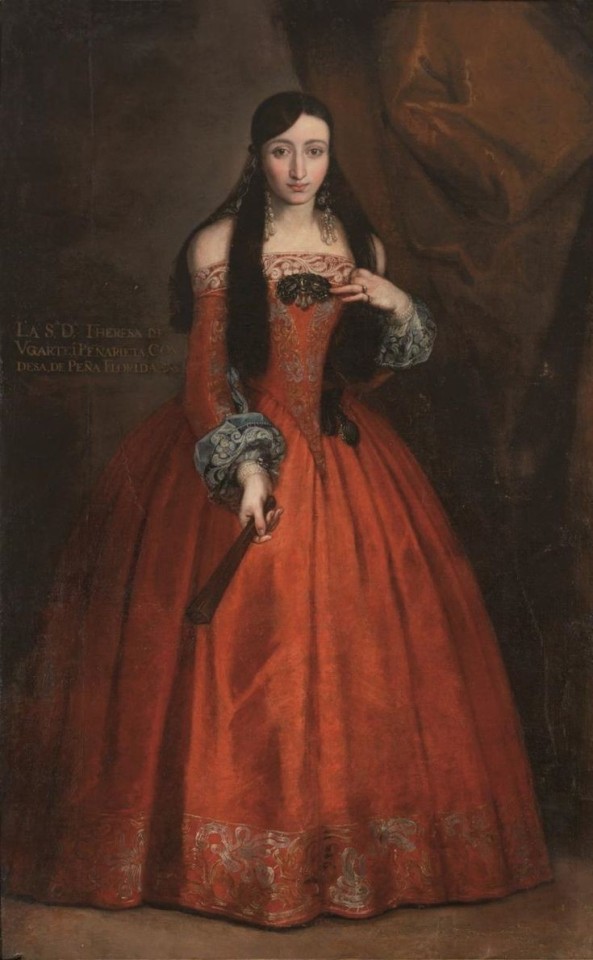
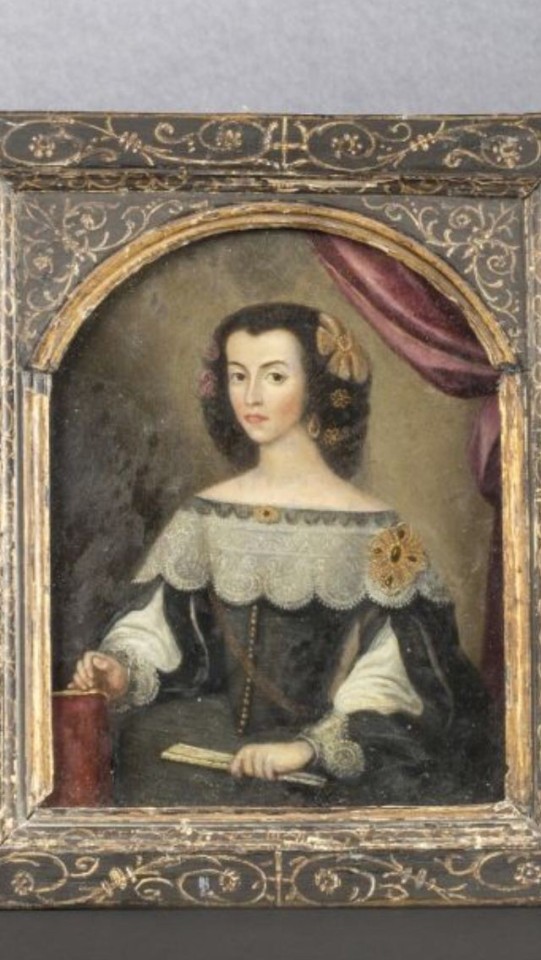


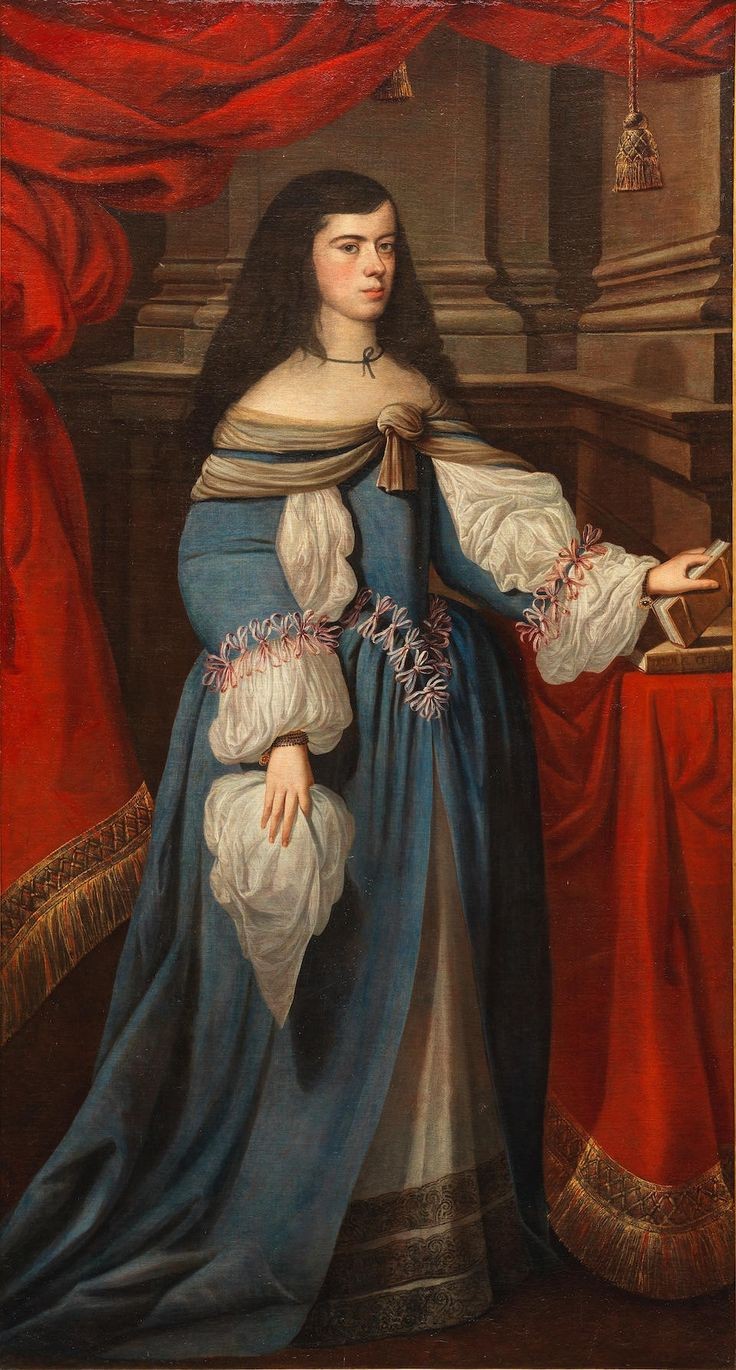


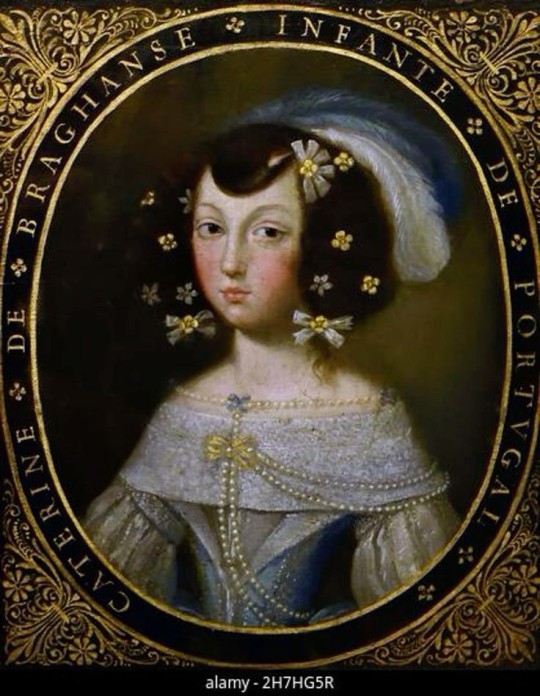
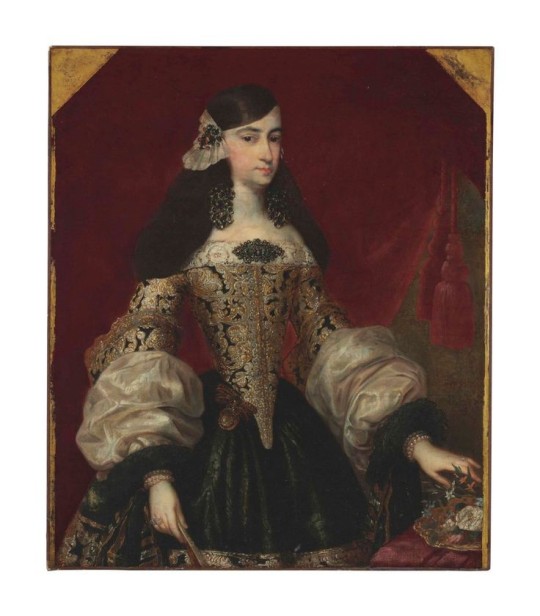
#baroque#baroque fashion#17th century#spanish#art history#historical art#1600s#historical fashion#fashion history
115 notes
·
View notes
Text



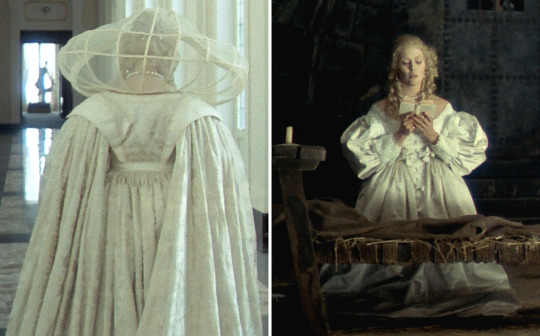
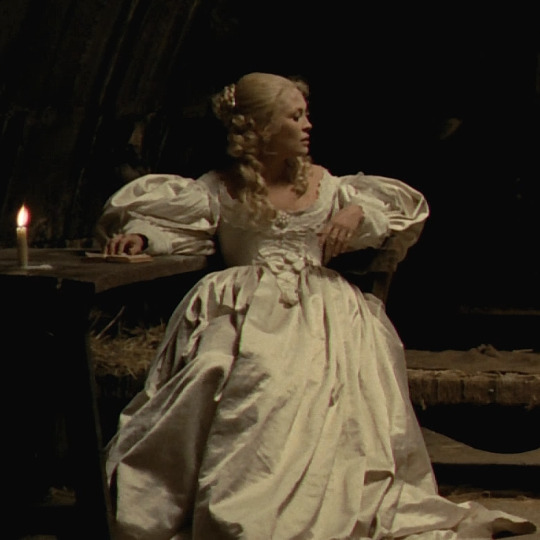

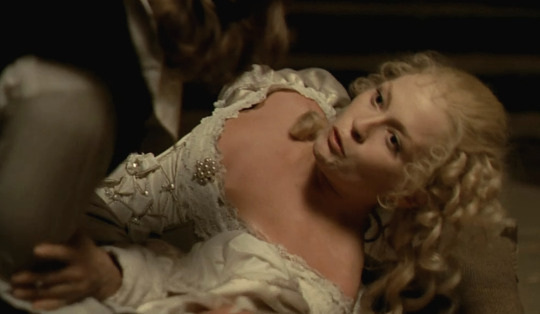
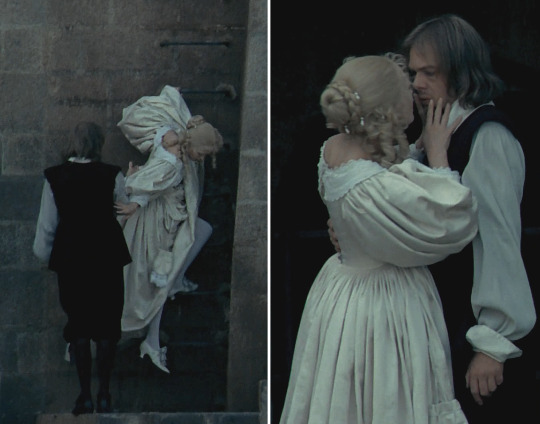
One Dress a Day Challenge
October: White Redux
The Four Musketeers: Milady's Revenge / Faye Dunaway as Milady de Winter
Rewatching this movie to make screencaps reminded me that it and its predecessor, the 1973 Three Musketeers, are just about perfect examples of their genre. The cast, cinematography, score, and yes, costumes are just top-notch. Yvonne Blake was responsible for the costumes for both films.
Milady wears this extravagant white gown while on a diplomatic-slash-assassination mission to England and then later, after being captured, manages to seduce her Puritan jailer into helping her escape. And she even climbs ladders in it! Now, that's what I call a versatile wardrobe.
Note the monogram "W" (for de Winter) on the muff. Also, that hooded cloak is quite something.
#the four musketeers#white dresses#faye dunaway#one dress a day challenge#one dress a week challenge#movie costumes#1974 movies#1974 films#17th century#17th century fashion#17th century costumes#period film#the four musketeers: milady's revenge#the four musketeers 1974#milady de winter#yvonne blake#white dress#baroque fashion#baroque style#17th century style#white redux#wonderful capes
145 notes
·
View notes
Text
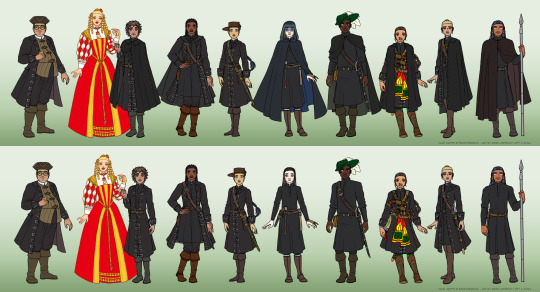
Pale Lights, Book 2 chapter 31 - Reference Sheet
Every so often, I return to this and give it an update.
This time, Wen has clawed his way onto the sheet. And Tristan got some anatomy fixes.
Other than that, a bunch of wardrobe updates. It’s always fun when you have the same characters wear the same thing differently.
Wen’s outfit is an unholy mix of two very distinct styles that doesn’t belong together at all. Which honestly is very Wen
#pale lights#fanart#character design#artists on tumblr#gwennafran art#renaissance fashion#baroque fashion
13 notes
·
View notes
Photo

Rembrandt van Rijn, Agatha Bas, 1641, oil on canvas, 105.4 x 83.9 cm, Buckingham Palace, London
Source: Royal Collection Trust
#painting#portrait#female portrait#rembrandt#rembrandt van rijn#agatha bas#1640s#17th century#17th century painting#17th century portrait#baroque#baroque painting#baroque portrait#dutch baroque#historical fashion#17th century fashion#baroque fashion
40 notes
·
View notes
Text
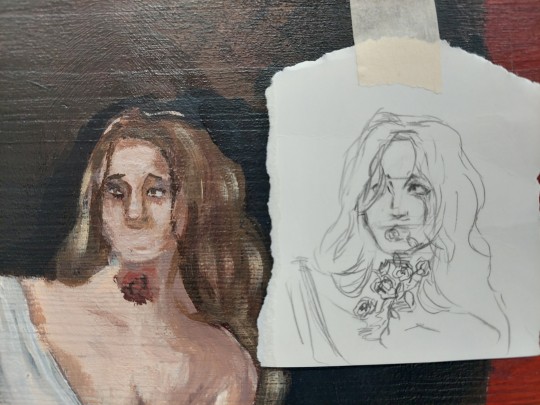

The face continues to be a mess, yet we persist. My mantra has become "the ugly stage is inevitable - moreover it is completely necessary for beauty to emerge." The shadows around the eyes need to be deeper, but at least it doesn't look like my estonian teacher anymore. As much.
#art#traditional art#art school#painting#fashion history#historical fashion#baroque#baroque art#baroque fashion#baroque painting#art school thesis#art thesis#painting thesis#acrylic paint#acrylic#acrylic painting#wip#art wip#work in progress
5 notes
·
View notes
Text
Costume by Gabriela Tylesova (Garland Dancer costumes) the designer of The Sleeping Beauty by the Australian Ballet
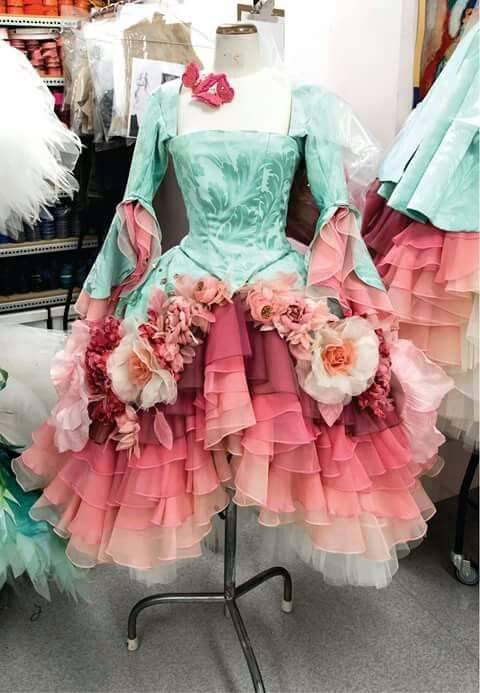
211 notes
·
View notes
Text
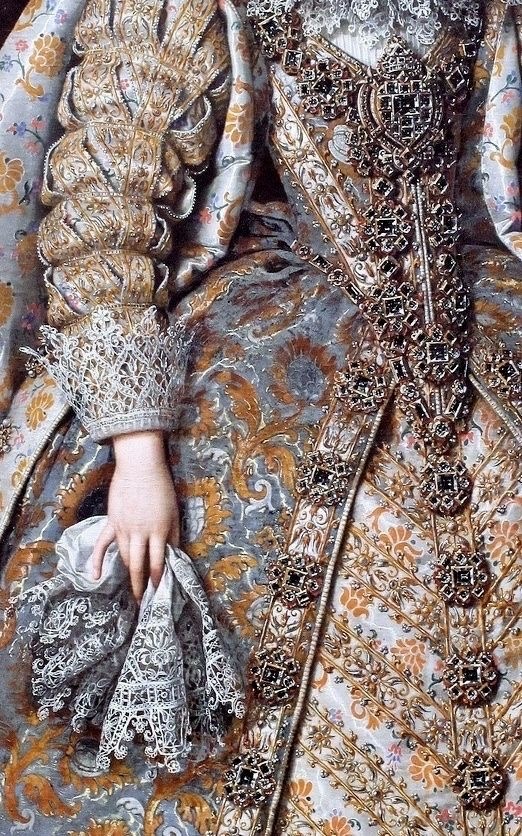
Detail of “Portrait of Elisabeth of France 1602-1615" oil on canvas by Frans Pourbus the Younger
#baroque#baroque art#art#oil painting#frans pourbus#portait#classical art#baroque fashion#art detail
16 notes
·
View notes
Note
Hiya!
Love your blog! So much cool info here. I don't know if this is the kind of thing you are interested in or know much about but I'm making a cosplay of Mary from the BBC Ghosts. She supposedly died in the early 17th century but I can't find anything on the blue bodice/waistcoat she is wearing. I think it is closer to 19th century stays? Anyway, I get it's not 100% historically accurate costume, just wondering. Thanks!
Hi, Anon! And thank you so much!
I haven't watched the show, but I checked out the outfit and here it is for those who also didn't know it before:

A quick look at the Ghosts wikipage of her tells she was an English peasant.
I ended up falling into a bit of research rabbit hole (which is why it took me this long to answer). The evolution of working class garments from Elizabethan era to 1700s ended up being very interesting and surprisingly complicated. It doesn't make it easier that there's very little info on the subject, especially regarding English working class. It's much easier to find info on Dutch and Flemish working class clothing, as the Dutch golden age/baroque art was very interested in depicting working class people, the style also provides abundance of detail. English artists were much less interested in painting common people.
To make the rest make any sense I think it would be useful to outline the evolution of garments used in 16th to 18th century. In 1500s kirtle (here's a post where I talk about what kirtle is and it's evolutiona mong other things) was becoming more and more structured, eventually it's bodice becoming fully boned. Lower classes wouldn't bone their kirtles but reinforce them with several layers of canvas or buckram. In the first half of the century a short wool coat was sometimes used under the outerwear far warmed called petticoat. It was the Little Ice Age after all. Two boned or highly stiffened kirtles started to be used on top of each other, the first layer being made from cheaper materials and acting as the actual supporting layer, and the one on top of it from more expensive materials, stiffening (not necessarily boning) making sure the fabric is structured and without wrinkles. In the latter half of the century petticoat started to refer to the undergarment kirtle. Petticoats usually were a full dress like kirtle, though there's references of "petticoats without the upper bodies" so petticoats with only the skirt were also used as undergarments.
It gained the connotation of a simple and not very fancy garment, which is why the lower class kirtles started to be called petticoats by late 1500s. Lower classes might also wear two layers of petticoats, often in contrasting colors, probably in cold weather and then one layer in hot weather. The bodice and skirt also could be contrasting colors. The outer petticoat had almost always lacing in the front, but the petticoat under it might have lacing in the back or side so it's fabric could be seen under the lacing over it. At least Dutch and Flemish women would usually have a stomacher of contrasting color under the front lacing if they didn't have a petticoat under. Very wide lacing which showed off the fabric beneath was typical (but not necessary) for those and the German speaking areas. Petticoats would often have attachable or sewn-in sleeves like kirtles since Middle Ages, so that they could be worn as undergarment without sleeves and outer garment with sleeves if necessary.
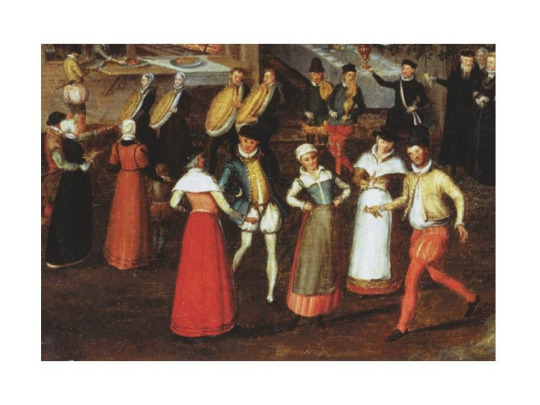
An example from 1570s England. Two of the three peasant women in the front are wearing petticoats with bodices made from different fabrics.

An example by Flemish painter from around 1560s/70s. The left-most woman is clearly wearing a soft stomacher under her petticoat and the woman in the very middle has attached sleeves as shown by the bulging shift in her arm pits.
Over the petticoats though working class women would often wear a looser sleeved over-garment which wasn't laced. Around Netherlands area it was a short jacket with widening hem at waist often called waistcoat, like on the right-most woman in above painting, though I'm not sure if that is actually contemporary term for it. In late 1500s England the over-garment seemed to be more commonly a full length gown open in the front with short or full sleeves, similarly as the fashionable outer garment of the upper classes but much simpler, but by early 1600s the waistcoat is most commonly depicted in England too. There were couple of important accessories. Partlet was in 1600s most often white linen, while in the earlier century woolen black partlets were also common (the woman in the middle of the Flemish painting above is wearing both). In 1500s and early half of 1600s the partlet had high collar with ruffle like shown in the above paintings and it was usually worn over the petticoat (though sometimes under) and under the waistcoat or similar over-garment. Apron was also very important for working women, and while most often it was white linen, wool and different colors like show in both paintings above were also common. Kercief, a (most often) white linen scarf pinned on shoulders, was also common, especially in England, as shown in the first painting and the one below.
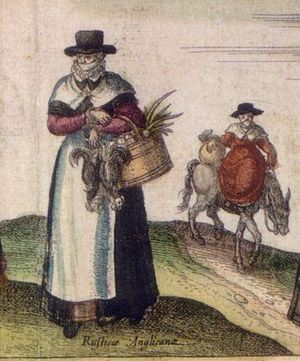
An English peasant from 1582 illustration wearing an open-fronted over-gown with short sleeves.
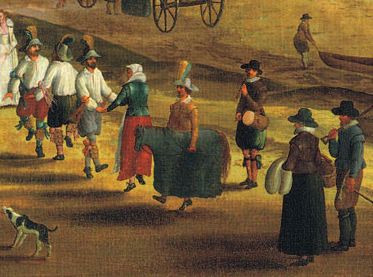
English peasants dancing from 1620s, while the women are wearing waistcoats.
In the fashion of the upper classes the bodice of the petticoat and the skirt of the petticoat started to appear as separate garments in late 1500s. A separate bodice was referred to as pair of bodies, or bodies, similarly to the bodice of the petticoat was referred to as upper bodies like I mentioned before. The word bodice actually derives from it. For clarity I will call the separate boned bodice as bodies. Like petticoat it was very much an undergarment, though could be used as a leisure wear in private. Like other supportive clothing that could be used as both under and over garments it also often had detachable sleeves. The full petticoat would fall out of use by the upper class by mid 1600s, but bodies wouldn't become universal as the structural layer yet, as the outer gown's bodice would often still be boned and used as the supportive layer. Working class women would use full petticoats till late 1600s, but separate bodies would become more widespread from early to mid century onward. Boning also would get adopted into working class clothing around mid century, though stiffening with fabrics or barely at all would continue to be common the whole century and still continue till early 1700s.
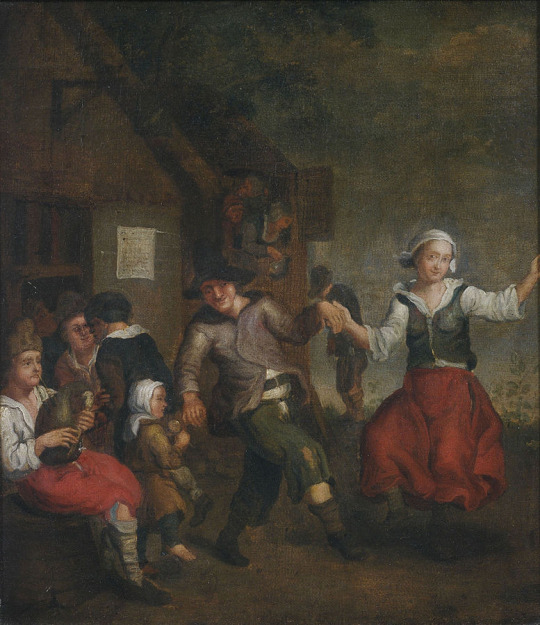
An example of bodies without boning on a peasant woman from the second half of 17th century Netherlands.
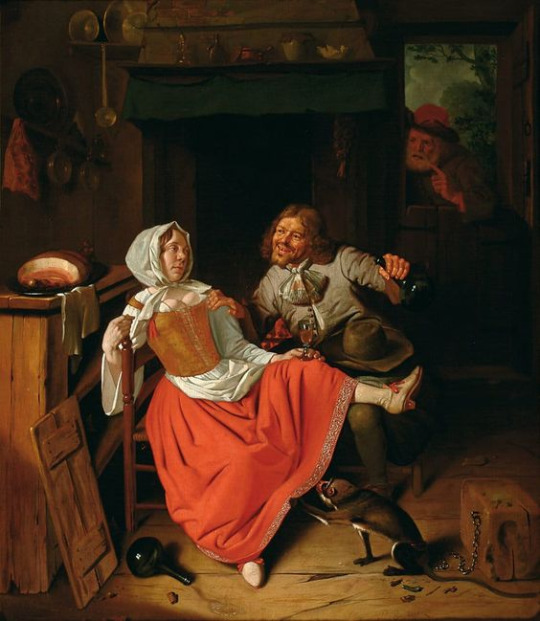
Working class woman with boned bodies from 1665-70, also Netherlands.
In 1680s there was a huge shift in the upper class fashion as mantua, completely unstructured garment, became extremely common and stays were developed from bodies to be it's supportive layer. Before that the boning was called stays, which alludes to the increasing distinction between outer and under clothing, as stays would be more of just separate boning rather than garment that could be used on it's own (though it could still be worn on it's own in some cases). In working class fashion the full petticoat fully disappeared by 18th century and the basic set of clothes was petticoat, supportive bodice without boning or stays (which would become almost universal during the century) and bed gown or jacket. Bed gown was short and very jacket-like, but a looser and t-shaped without the shoulder seem. Both were increasingly used regardless of weather.
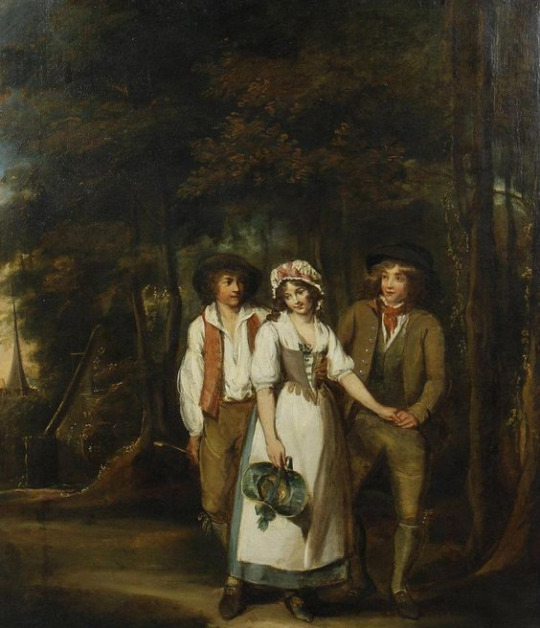
Stays as outer garment from around 1780s-90s.
I think that Mary's blue waistcoat/bodice most resembles 18th century examples. Specifically, the supportive laced bodices without boning, like in the examples below. Unfortunately I haven't found any info about them. The cut is simpler than stays and actually reminds me most about jackets/waistcoats without sleeves. I've read there was laced under-jackets used in 18th century, so I'm wondering if these bodices relates to that. Maybe likelier origin is that they evolved from the previous century working class bodies that didn't have boning. Mary's bodice however is cut very differently. The neckline is high unlike these 1700s bodices, which purpose was to lift the chest.

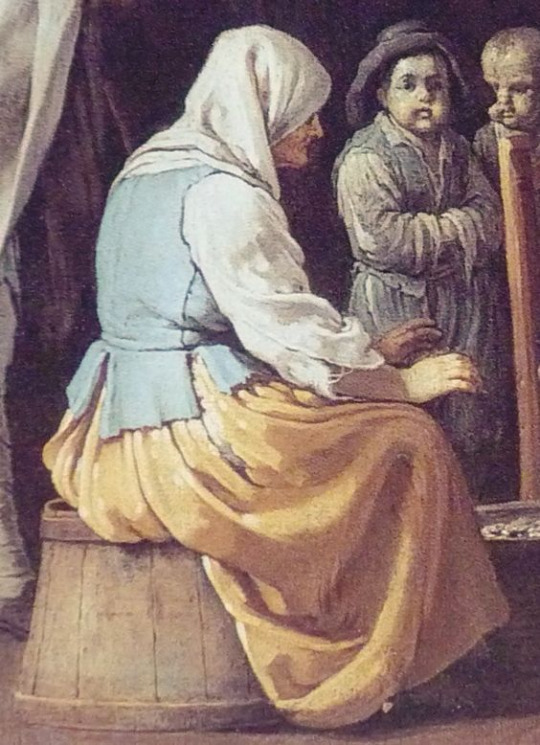
Firstly a Dutch painting from first half of 18th century and then Italian painting from 1721.
Because supportive garments became very much undergarments or at least the second lowest layer right after shift, even if nothing was worn on top of it, it really doesn't fit Mary's bodice. Though I maybe found an exception where stays are possibly worn on top of a sleeved waistcoat or maybe bed gown, but it's hard to say and I haven't seen any other examples of that.

A 1713 Dutch illustration of Brabant, Belgium, dress. The bodice part looks like it could be a bed gown or similar loose jacket-like garment with boned stays on top of it. With little detail and no color it's hard to say though. It could be also a boned jacket or jacket on top of stays.
There is actually a fairly well documented style around this era that does have long sleeved garment beneath and sleeves garment over it. In the latter half of the 17th century and more rarely in early 18th century paintings depict Dutch and Flemish working women wearing long sleeved garment and laced bodice or petticoat over it. I haven't really seen depictions outside of them, however it doesn't mean they don't exist, since as said in the beginning there's just overwhelmingly more lower class depictions in Dutch and Flemish art than in any other art. Still, there being examples of this style from 1700s, when it's very outdated and absent in working class and peasant depictions of art from other areas, where depicting working class is becoming more common, suggests to me that it's at least somewhat regional style.
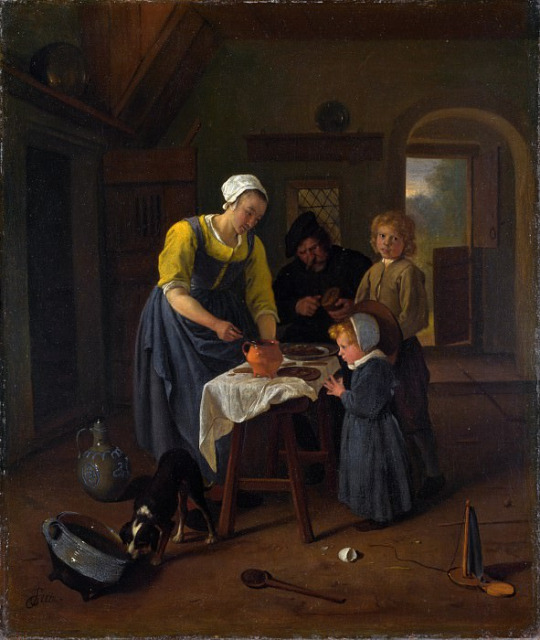
A Dutch painting from circa 1665.
In the above painting the woman seems to wear a full petticoat (the bodice and skirt are same color) with lacing on the front and what seems like a waistcoat under it. It's hard to say if the bodice is boned. This is a nice example as the partlet (the collar had mostly lost popularity by this time) is under garments unlike in most other depictions where it's on top of the bodice. We can then see that the sleeved garment is pinned and has fairly high neckline making it look a lot like the waistcoats of the time. It could be that they are not all the same garment. I would have rather guessed they were full petticoats with sewn-in sleeves before seeing this painting, but some of them still could be, especially the ones that seem more fitted. I haven't found any information about it, except one webside where it was called bed gown, which I think they definitely are not as they come earlier, are sometimes very fitted and often the shoulder seem of the sleeve is shown. Bodies and petticoats with detachable sleeves and waistcoats as over-garments are still frequently found in Dutch and Flemish paintings of the time, which makes me question why would they put especially waistcoat under the supportive layer? My little pet theory is that they need it for the warmth, but they want to protect it with a less expensive petticoat and/or bodies while working.
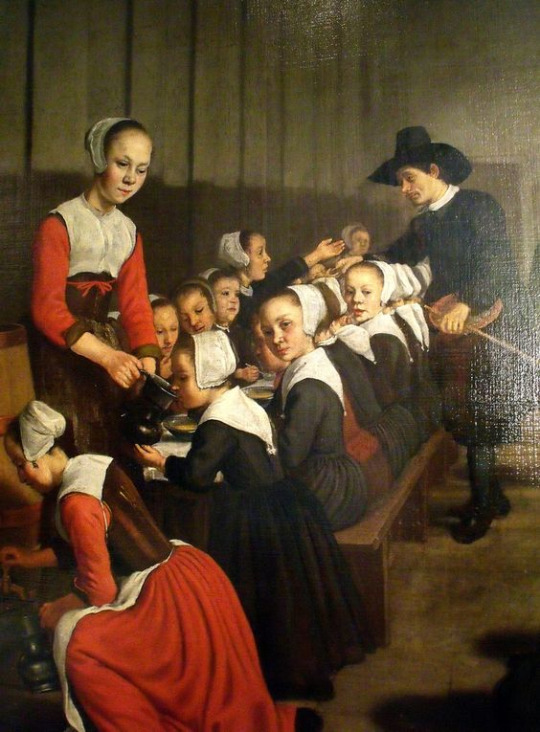
A Dutch 1659-60 painting. Here I think the women in red could be wearing sleeved petticoats or separate bodices under their bodies.
For Mary's outfit the issue is the peplum-type hemline on her blue bodice. It's very much absent in this era from bodies both boned and not, weather because the bodies end in waistline, which there's some depictions of like the one several pictures above, or the hem is under the petticoat. But I did find this one garment from the same era also depicted in Dutch and Flemish art mostly on older women. It has the peplum hem, but it's not bodies. All the examples I've seen are pinned close, so not supportive and definitely not boned. They are also cut differently. The shoulders are quite wide and the neckline high. It almost feels like sleeveless waistcoat. I found even less info on this style, so I can only guess.
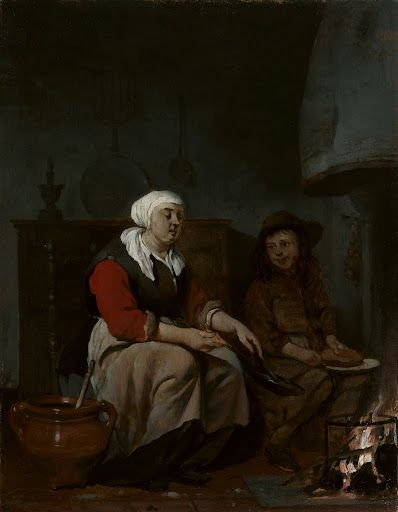
Dutch painting from circa 1650-55. The waistcoat/bodice has a hem here that extends over the gray petticoat unlike with other garments we've looked at.
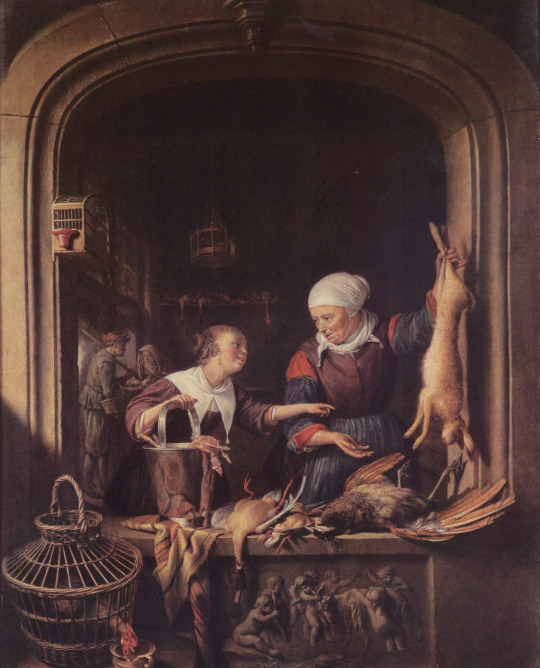
Dutch painting circa 1670. In the enlarge image you can just make out the seem of the undergarment.
I think Mary's clothing best reflects this specific style from this period of time. Her partlet also lacks the ruffle as later 1600s partlets usually do. Her apron is also gathered like those in the latter half of 1600s. Earlier aprons are usually not gathered as seen in the couple of first examples. The blue bodice I think is a mix between the sleeveless waistcoat-type garment seen in two above paintings and the separate or petticoat bodices which are not boned. It's laced and has narrow shoulders like the bodices, but it has high neckline and the hem over the petticoat like the sleeveless "waistcoats". The ruffles on her sleeves don't make sense in this time period. They could make more sense in 1700s. Over all it's actually pretty close in time and geographically to the time and place she's supposed to come from, even if it's not the way she'd actually dress if she was from early 1600s England.
#fashion history#historical fashion#historical clothing#historical costuming#bbc ghosts#working class clothing#peasant clothing#dutch golden age art#baroque#baroque fashion#elizabethan fashion#dress history#answers#ask
118 notes
·
View notes
Text
Cheers to the love
That strange disease dragging us down
Cheers to the power
To the fact we all want to rise higher
Cheers to the blood
Dropping pointlessly on the mud
Cheers to the sword
Causing this bloody flood
Cheers to the pain
When we can not wash away that stain
...
A little bit of drama and a sneak peak at the costume I'm currently working on.
Wig, makeup, model and photo by me <3

#17th century#art#historical costuming#historical reenactment#historical sewing#history#drama#vampire#vampcore#historical fashion#historical costume#versailles#louis xiv fashion#louis xiv#le roi soleil#17th century fashion#baroque fashion#baroque#hand sewing#dark aesthetic#dark poetry
10 notes
·
View notes
Photo

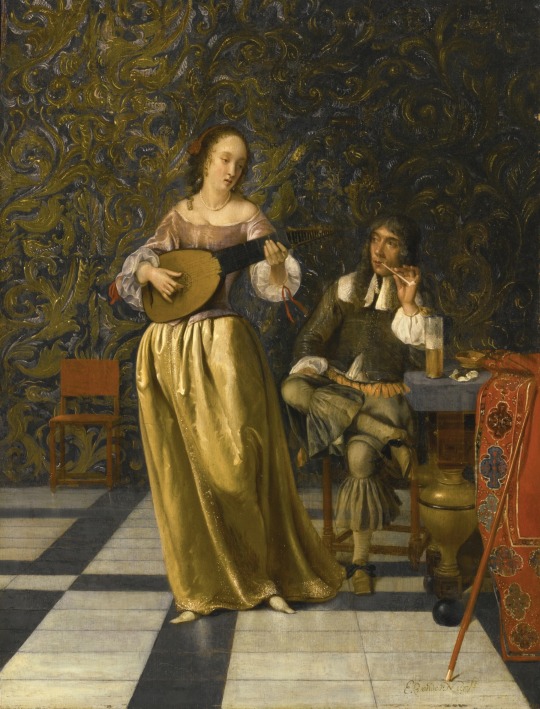


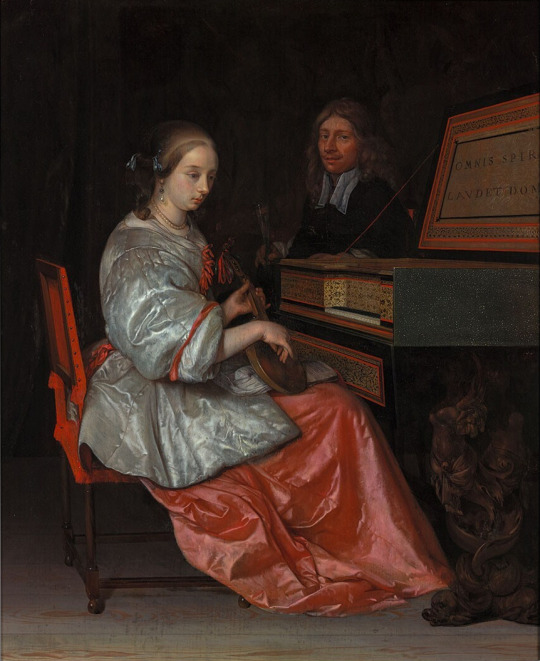
Back to the mid-1600s (from top to bottom) -
Woman Washing her Hands by Eglon van der Neer (Mauritshuis - Den Haag, Zuid-Holland, Netherlands). From pubhist.com/w40585 807X1000 @72 309kj.
ca. 1660 Lady playing a lute with a gentleman seated at a table in an interior by Eglon Hendrik van der Neer (Sotheby's - 28Jan16 auction Lot 28)2880X3782 @72 3.3Mj.
1665 La Grande Dame by Eglon Van der Neer (private collection). From Wijimedia; fixed some cracks, spots, & veiling reflections w Pshop 1721X2048 @72 1.7Mj.
ca. 1666-1670 Isabella d'Este by Frans Denys (Galleria Nazionale - Parma, Emilia Romagna, Italy). From tumblr.com/roehenstart; fixed spots w Pshop 1022X1280 @72 394kj.
1669 Woman at a virginal with a cittern on her lap, accompanied by a man by Eglon van der Neer (Museum Boijmans Van Beuningen - Rotterdam, Zuid-Holland, Netherlands). From Wikimedia 2802X3430 @72 2.1Mj.
#1600s fashion#Louis XIV fashion#Baroque fashion#middle 1600s fashion#1660s fashion#Eglon van der Neer#off shoulder neckline#petticoat#Eglon Hendrik van der Neer#paned sleeves#Isabella d'Este#Frans Denys#sheer bertha#jacket
76 notes
·
View notes
Text
1630s fashion save me.
1630s fashion..
Save me 1630s fashion.
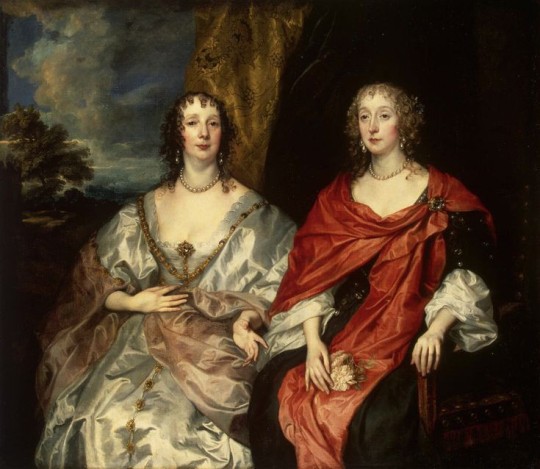
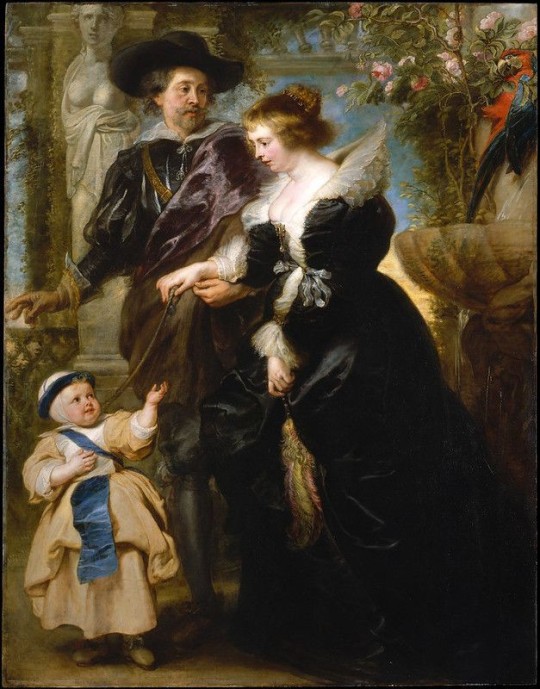
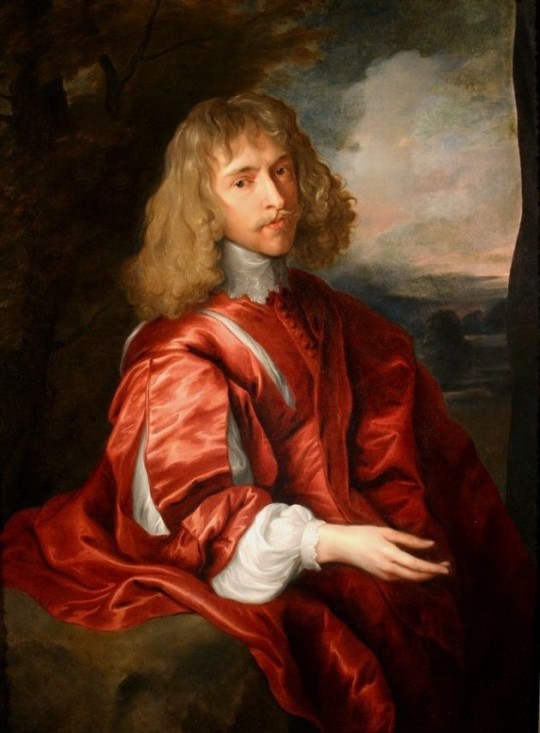




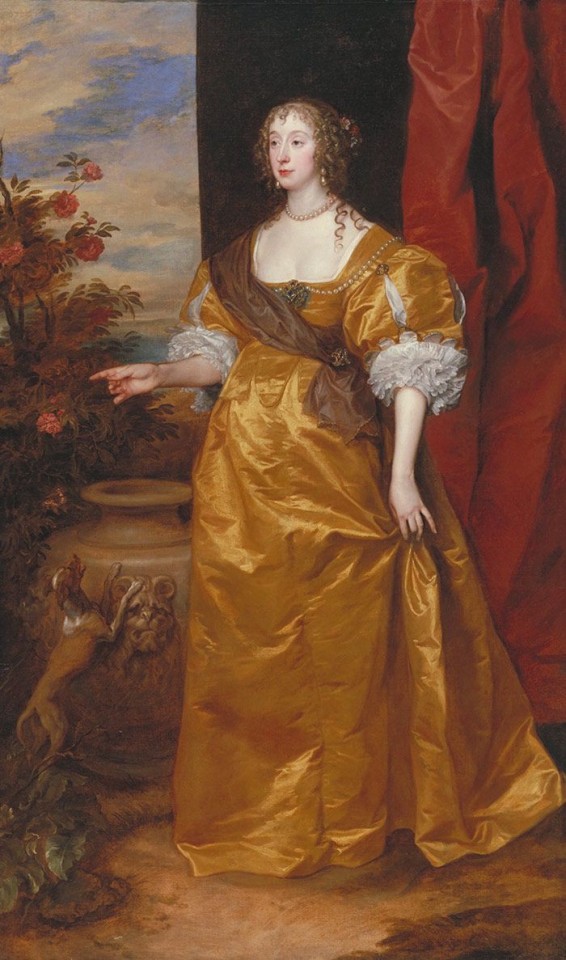


#art history#fashion history#historical fashion#1630s#baroque#baroque fashion#historical art#17th century#history memes#old paintings#historical shitposting
63 notes
·
View notes
Text
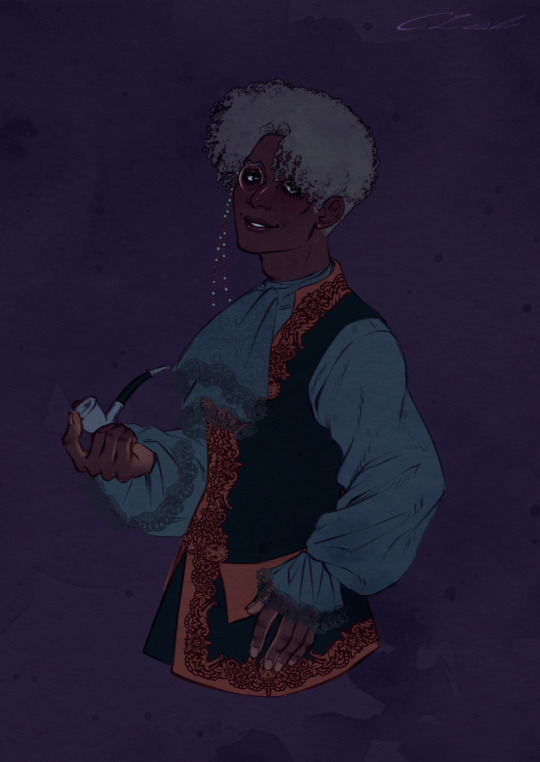
More musketeer oc colors, this time for Marius' Uncle Heinrich, the shy but affable royal executioner. 💀
#art#oc#musketeer#chevalier#lineart#ink#character sheet#character design#character reference#csp#digital art#illustration#historical fantasy#historical#artist#artists on tumblr#wip#baroque#baroque fashion#frock coat#17th century fashion#rococo#line art#18th century fashion#my art
42 notes
·
View notes
Text
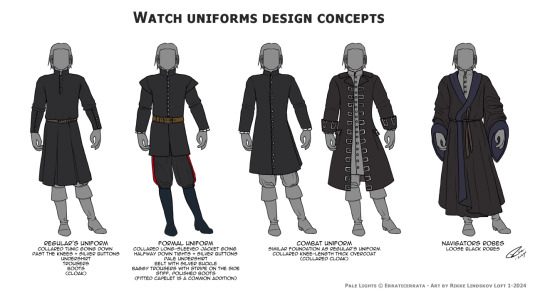
Pale Lights Uniform Design Concepts
The fighting fit overcoat has a collar… I had to redesign it. So, well… Time to make myself some proper references for myself to pull out going forward. Because I draw these things a lot and have a lot of characters on the same images.
Changing stuff as I feel like while I’m already looking at the prospect of changing a bunch of clothes in the overviews. Renaissance and Baroque stuff merged together here. A lot. XD
Regular’s uniform: The tunic is ending under the knees. I’m actually drawing it too short. But I like being able to just glimpse the pants.
I’m assuming the tunic is an actual tunic. As “military tunics, only became a thing mid nineteenth century. And there definitively are limits on how far I’ll stretch something when WOG is style inspiration is pre-Rococo. Also, the length goes towards traditional tunic as well.
Formal uniform: I based this on Renaissance fashion with a (very basic) doublet. I’m so tempted to fancy up the sleeves on this, but I am trying to also be practical here. The only things not a perfect fit for Renaissance in the description are the boots and the mid-tight length.
Fun fact, going from descriptions, this is by far the shortest uniform top out of all of them.
Combat uniform: The lower layers are described as a similar foundation as the regular’s uniform. I cheated. I turned it from a tunic to a waistcoat and made it a bit shorter than it should be. Because that just looks more right to me under the overcoat. And I’ll probably draw this a lot going forward.
I tried to maintain some period accuracy with the overcoat’s button closings. But the rest is honestly Rococo rather than Baroque.
Navigator’s robes: Based on Renaissance scholar’s robes. Picked a length that wasn’t too impractical. On top of regular’s uniform.
#pale lights#fanart#character design#artists on tumblr#gwennafran art#renaissance fashion#baroque fashion
10 notes
·
View notes